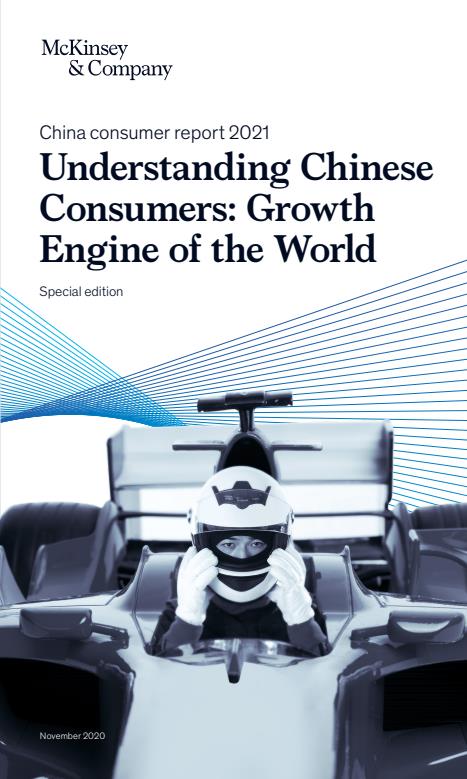In early January, our main concern was choosing where to go with our families to celebrate the Lunar New Year. Then, just a few days before the holiday began, the announcement of a lockdown in Wuhan threw all our plans into disarray. The outbreak of the COVID-19 pandemic changed life as we knew it literally overnight. Measures to contain the spread of the novel coronavirus drastically altered the way consumers behaved and how companies ran their operations. Everyone from frontline staff to executives were impacted by a temporary ban on travel, the move to remote working, and the impossibility of entertainment or excursions outside home. Even though China’s recovery is now gaining momentum, all of us are grappling with a new environment in which digital tools and innovation have proved indispensable.
At McKinsey, we redoubled our efforts to help clients and colleagues in China to maneuver through the crisis. We also worked hard to share crucial lessons with other parts of the world, connecting the dots on best practice on reopening businesses while keeping workers and consumers safe. Meanwhile, we conducted extensive research over the course of the past few months to help China-focused consumer and retail companies to emerge from the pandemic in a position of strength. Drawing on proprietary insights, we investigated how consumer behavior shifted and will continue to shift during and post-COVID-19, how consumer and retail companies are responding, and how China is faring versus other markets. We collaborated with Oxford Economics to project macro-economic recovery curves; conducted monthly polls of executive opinion on likely recovery scenarios; tapped into research by the McKinsey Global Institute (MGI) on long-term trends; took our weekly “pulse” surveys, which were conducted multiple times to assess consumer sentiment in China and 44 other countries worldwide; and executed an in-depth analysis of over 100 million points-of-sale data on purchase behavior before, during, and after the COVID-19 crisis.
This special edition of the China Consumer Report, “Understanding Chinese Consumers: Growth Engine of the World,” provides perspectives on the trends that are defining the ‘next normal’ in post-pandemic China. The articles within aim to provide consumer and retail companies with the insights necessary to thrive in this challenging environment. In keeping with the competitive spirit of the consumer sector, we selected racing as our theme. We begin with “Revving the engine,” a section that brings together our latest consumer insights, starting with an MGI report that puts China’s experience in a global context, showing how the pandemic has accelerated several pre-existent trends, notably digitization and the increasing prudence and health consciousness of Chinese consumers. The remarkable resilience of those consumers continues to impress, with our second article revealing that they remain among the most optimistic in the world, and expect a more rapid return to normal versus their counterparts in other markets. This sense of confidence helped China’s retail sales return to growth in August, indicating the potential for Chinese consumers to drive not just a domestic economic recovery, but potentially a global one as well.
COVID-19 has changed the ways consumers behave across multiple aspects—from shopping for groceries to traveling to purchasing luxury goods, and we further deep-dive into how the pandemic has shaped these industries. For example, ‘Winning the future of grocery retail in China’ forecasts robust growth for the China market but cautions that key players must make significant strategic shifts in order to keep pace with the breakneck speed of digital innovation. We then look at what the world can learn from the reopening of China’s tourism industry, and finally, we round out this section by drilling down into how the pandemic has changed the outlook for luxury goods companies.
In “The driver’s seat,” we interview the leaders of the China operations at two of the world’s most iconic consumer companies—Coca-Cola and McDonald’s. Phyllis Cheung, Chief Executive Officer of McDonald’s China, and Curt Ferguson, President of Coca-Cola Greater China and Korea, share their experiences in leading their companies during the crisis, and provide insights on what lies ahead for consumer and retail companies in China.
During the pandemic, consumers doubled down on digitization, a subject we address in the next section, “Tuning up for maximum performance.” We provide guidance on how the right business-to-business strategies can capture growth from digitization, and explain how direct-to-consumer social commerce models can grow online traffic and acquire new users at optimized cost. We explain why developing end-to-end omnichannel capabilities is becoming critical in these uncertain times.
We conclude this special edition with “Hitting top speed,” a section that details strategies for identifying new pockets of growth. COVID-19 has further moderated domestic economic activity, meaning companies can no longer rely on strong macro-economic growth to expand. We reveal the key to engaging with China’s Generation Z, the cohort of digital native consumers driving the next wave of consumption growth. Finally, we detail how consumer packaged goods (CPG) companies can achieve sustainable growth through revenue growth management.
Our clients often ask us, “What is the next China?” This compendium makes one thing clear: There is no “next China.” China’s economy is unique and is set to retain its pre-eminent role as the engine of global consumption growth post-pandemic. Companies will require a focused strategy if they wish to continue playing a part in what many would argue is the world’s most exciting consumer story.
Download Understanding Chinese Consumers: Growth Engine of the World, the full report on which this article is based.



